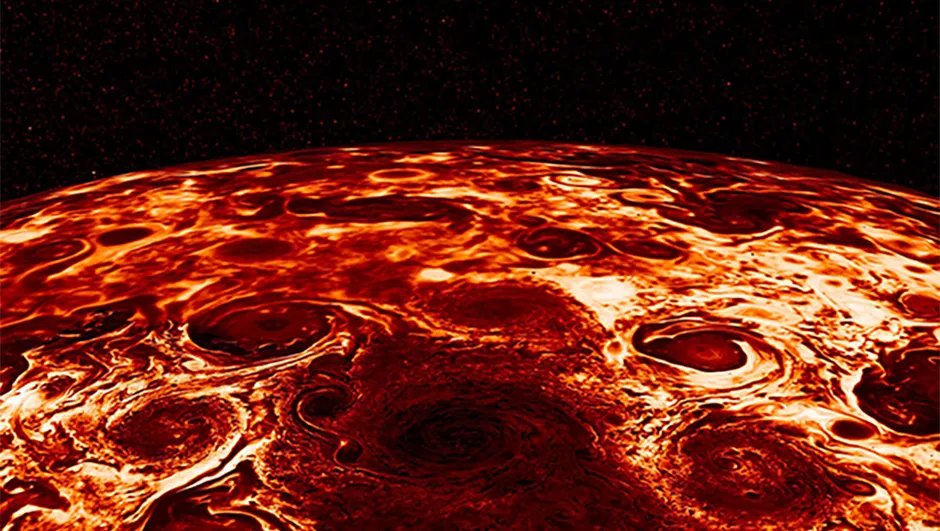Jupiter’s atmospheric winds run deep into its atmosphere and last longer than any similar processes on Earth, while the massive cyclones surrounding its poles are unlike anything else seen in our Solar System. These are some of the latest results from NASA's Juno spacecraft at Jupiter.
Just how far deep Jupiter’s zones and belts stretch had been a mystery, but the Juno spacecraft has been able to measure the planet’s gravity, providing an answer to this question.
“Juno’s measurement of Jupiter’s gravity field indicates a north-south asymmetry, similar to the asymmetry observed in its zones and belts,” says Luciano Iess, Juno co-investigator from Sapienza University of Rome.
On Jupiter, the visible streams are asymmetric north and south.And, because deeper jets contain more mass, this creates a stronger signal in the gravity field, detected by Juno.
Scientists can then infer from the magnitude of asymmetry in gravity, just how deep the jet streams extend.
This result reveals that the weather layer on Jupiter is more massive and extends more deep than had previously been estimated.
Extending about 3,000km down, the weather layer contains about 1% of Jupiter’s mass. Beneath this weather layer, the latest studies also reveal, Jupiter rotates as an almost rigid body.
A NASA video explaining Juno's discovery of what lies beneath Jupiter's cloud tops. Credit: NASA/JPL-Caltech
At the poles, Juno revealed something very different to the orange and white belts and zones that encircle the planet’s lower latitudes.
The north pole contains a central cyclone surrounded by eight circumpolar cyclones, with diameters ranging from 4,000 to 4,600 km across.
The south pole contains another central cyclone, surround by five cyclones with diameters ranging 5,600 to 7,000 km in diameter.
“Prior to Juno we did not know what the weather was like near Jupiter’s poles. Now, we have been able to observe the polar weather up-close every two months,” says Alberto Adriani, Juno co-investigator from the Institute for Space Astrophysics and Planetology, Rome, and lead author of the paper.
“Each one of the northern cyclones is almost as wide as the distance between Naples, Italy and New York City, and the southern ones are even larger than that.
“They have very violent winds reaching, in some cases, speeds as great as 350 kph. Finally, and perhaps most remarkably, they are very close together and enduring.
There is nothing else like it that we know of in the Solar System.

Since entering Jupiter’s orbit on 4 July 2016, the Juno spacecraft has logged almost 200 million km and completed 10 science passes over the gas giant.
“These astonishing science results are yet another example of Jupiter’s curve balls, and a testimony to the value of exploring the unknown from a new perspective with next-generation instruments,” says Scott Bolton, principal investigator of Juno.
“Juno’s unique orbit and evolutionary high-precision radio science and infrared technologies enabled these paradigm-shifting discoveries.
Juno is only about one third the way through its primary mission, and already we are seeing the beginnings of a new Jupiter.”

